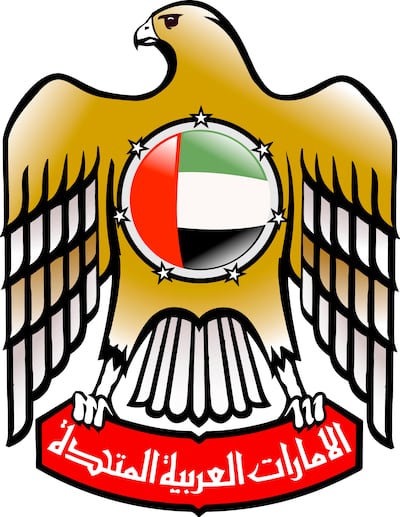Falcons, dates and the Arabian Oryx. These and other cherished symbols reflect the UAE's rich history and foster a sense of national unity and identity.
Here, The National explores some of the items most associated with the UAE and its history.
Flag

Created by the then 19-year-old Abdullah Mohammed Al Maainah and raised for the first time on December 2, 1971, the flag of the UAE uses four colours common to many countries in the Arab world – red, green, black and white.
While these colours are open to interpretation, its creator told The National in an interview in 2011 that red and white were already widely used in the flags of the seven emirates, while black stood for oil and green for fertility.
Alternatively it is said that red is for courage, green for prosperity, black represents solidarity and white for goodness.
Finally the colours can also symbolise Arab unity and the four great caliphates. Red for the Hashemites, white for the Umayyad, green for the Fatimid and black for the Abbasid – and the colour of the standard they carried into battle.
Emblem

The emblem of the UAE be used by the President and state institutions, including Etihad Airways.
It features a golden falcon, known as the Hawk of Quraish, the tribe to which Prophet Mohammed belonged. It has been widely used across the Arab world.
The UAE emblem is distinguished by a disc in the centre of the bird, featuring the country’s flag, surrounded by seven stars for the seven emirates. The falcon holds a red banner in its talons, with the name of the country in a form of Arabic script called kulfic, which is one of the oldest known and originally developed in Iraq.
The emblem was redesigned in 2008, and previously had a red disc with a dhow at sea.
Falcon

The national bird of the UAE is the falcon, representing the culture and traditions at the heart of its desert people. Strong, fearless, fast and agile, the falcon has all the characteristics once needed to survive in such a harsh environment, and is used widely both as a symbol, but as a living creature at many events.
Arabian Oryx
Magnificent with its sweeping horns, the Arabian Oryx is the national animal of the UAE. It was hunted nearly to extinction, but thanks to a conservation programme supported by Sheikh Zayed, the Founding Father, the oryx is now thriving again in the wild, and can also be seen at wildlife centres in the UAE. Like the falcon, it also appears on the UAE currency.
Dates
The national fruit of the UAE is the date. Growing freely across the country and able to withstand heat and low rainfall, the date was a vital food when many people lived a nomadic life in the desert, supplying essential nutrients when little else was available. Harvested in the heat of summer, the fruit can be pressed into blocks for preservation to eat year long.
So important is the date for UAE culture, that it is celebrated annually at the Liwa Date festival, with generous prizes for the pick of the crop.
Ghaf

The national tree of the UAE is the ghaf tree. Why not the palm? Well, technically, the palm is not a tree but a type of herb, related to bananas and bamboo!
The ghaf, or Prosopis cineraria, like the people of the UAE, adapted to surviving in the desert. Slow growing, it sends roots up to 100 metres in search of moisture and is effectively drought-proof.
In days gone by, its seeds and leaves would be fed to livestock or even eaten by people. Urbanisation threatened the ghaf, but it was made the national tree in 2008 and it is now illegal to cut one down.
Gahwa

Everybody knows that the first taste of the UAE is a cup of coffee – not from Starbucks but an elegant brass pot known as a dallah, seen on the 1 dirham coin.
Traditionally brewed over a fire to welcome guests, the national drink is served in small cups, often flavoured with a little cardamom or saffron. Gahwa will be served until the guest has had their fill, indicating this by gently shaking their empty cup.
Tribulus
Five different varieties of the tribulus, can be found almost anywhere in the UAE, except in the coastal sabkha. Unofficially the country’s national flower, it has five yellow petals and small leaves known as pinnate. Tribulus is the name adopted by the bulletin of the Emirates Natural History Group.
Food
Identifying one national dish is tricky, especially as food in the UAE is influenced by so many cultures and traditions. Not so many generations ago, the staple diet of many was imported rice and locally caught fish, with camel's milk and dates for those living in the desert. Meat – typically goat – was served only on special occasions, like Eid or weddings.
Perhaps the dishes most associated with the UAE are harees, a type of savoury wheat porridge pounded with meat, and kabsa or machboos, a spicy platter of grilled meat and rice. As a snack, there is luqaimaat, hot deep fried doughnuts, served with date syrup and a scattering of sesame seeds.








